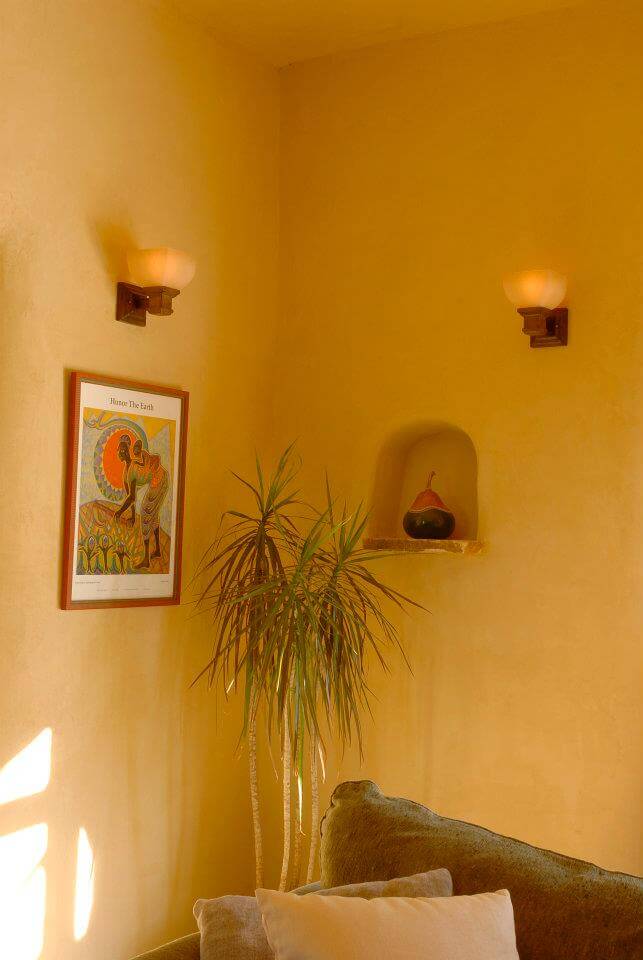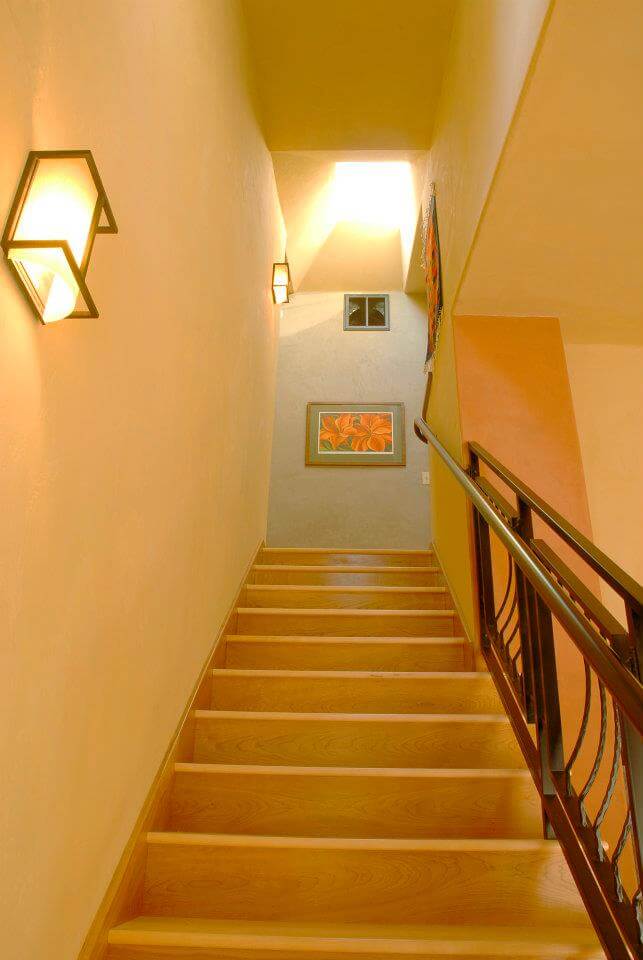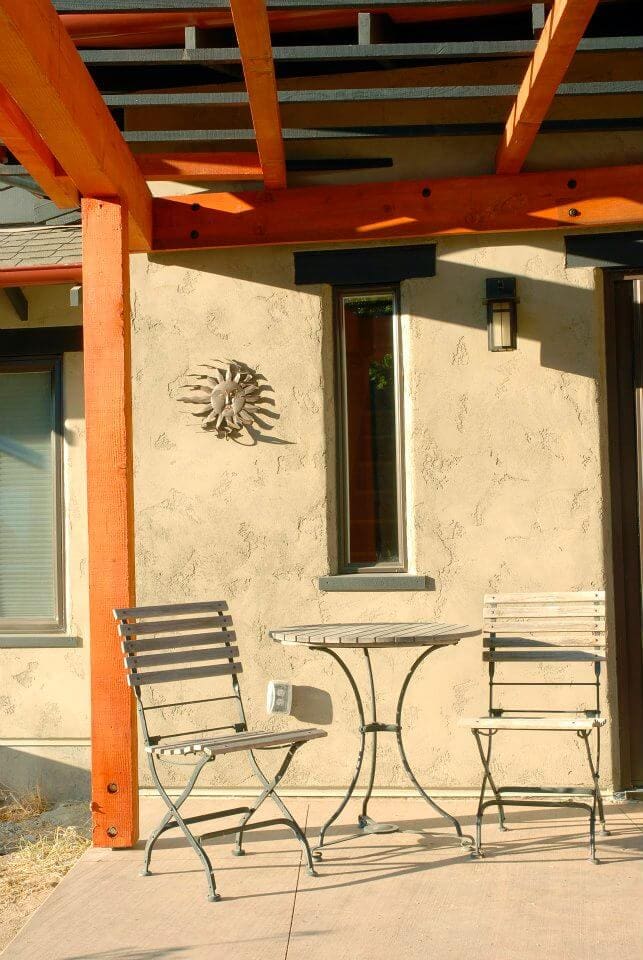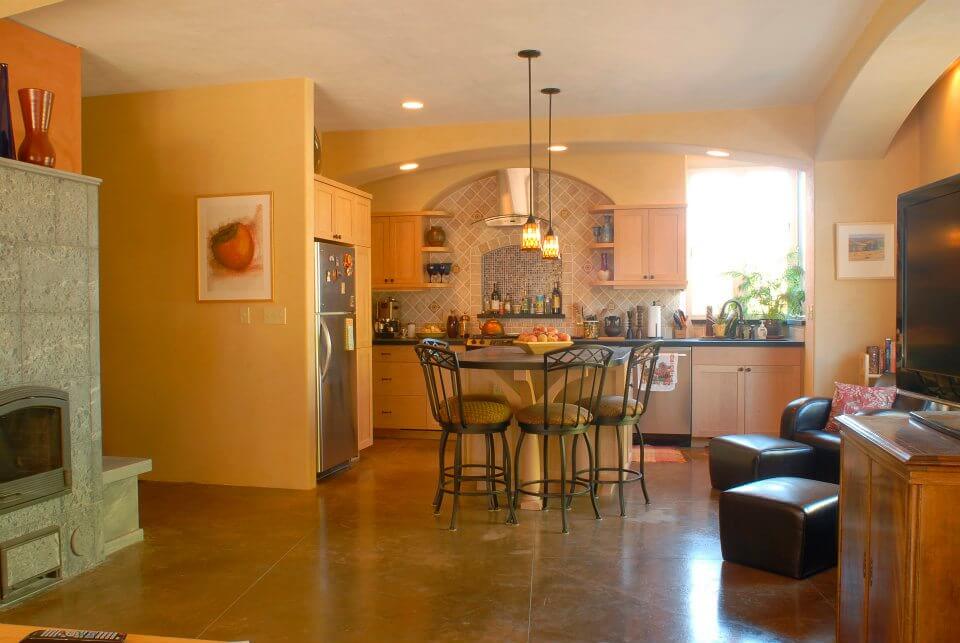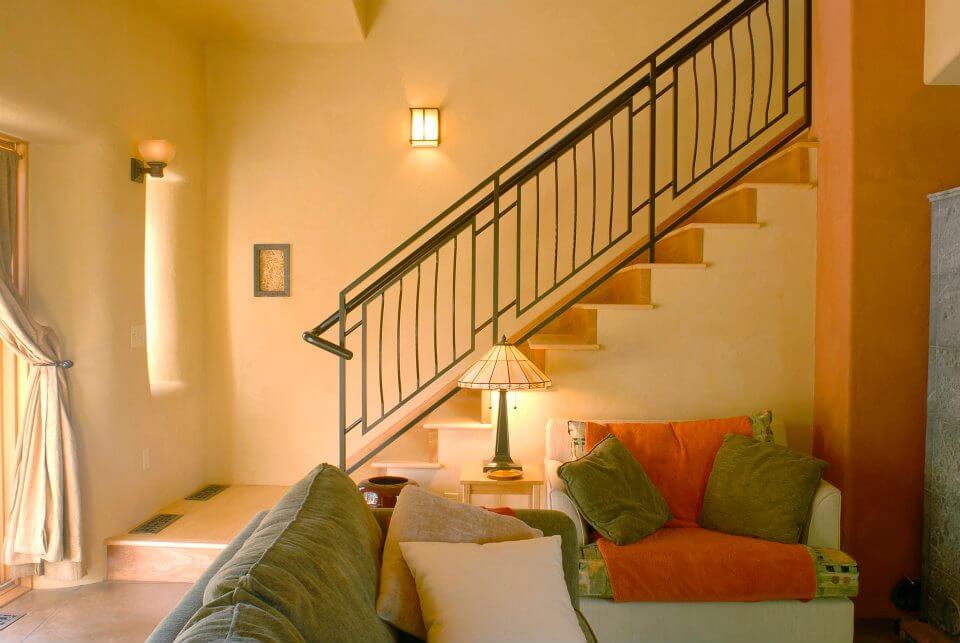Located in Ashland’s historic residential district, this custom home was designed for clients who envisioned a residence that harmonizes with both the environment and modern living. They sought a home built with sustainable materials and energy-efficient systems—one that would reflect their values of environmental responsibility and comfort. The design integrates both passive and active solar systems for water and air heating, optimizing the region’s abundant sunshine for year-round efficiency.
To achieve the desired performance and aesthetic, we selected straw bale construction for the exterior walls, a building method that combines natural materials with exceptional energy performance.
What Is Straw Bale Construction?
Straw bale construction uses tightly compacted bales of straw—typically from wheat, rye, or oats—as structural or insulating components within wall systems. Once plastered, these walls are durable, fire-resistant, and beautifully textured, creating a distinctive organic appearance that suits both traditional and contemporary styles.
Benefits of Straw Bale Construction
- Superior Insulation: Straw bales provide exceptional thermal performance, maintaining stable indoor temperatures and reducing heating and cooling costs.
- Sustainability: Straw is a renewable byproduct of agriculture, making it an environmentally responsible choice with low embodied energy.
- Healthy Indoor Air: Natural materials and breathable plaster finishes help regulate humidity and improve indoor air quality.
- Sound Insulation: Thick, dense straw bale walls naturally absorb sound, creating a quiet, peaceful interior environment.
- Aesthetic Appeal: The softly rounded corners and warm texture of plastered straw bale walls add character and craftsmanship to any home.
In addition to the straw bale wall system, the home incorporates a convection floor slab to enhance passive solar heating. This system captures solar warmth through the concrete slab and circulates it evenly throughout the living spaces, creating steady, comfortable warmth. Together, these sustainable design elements create a home that is energy-efficient, resilient, and deeply connected to its natural surroundings.

